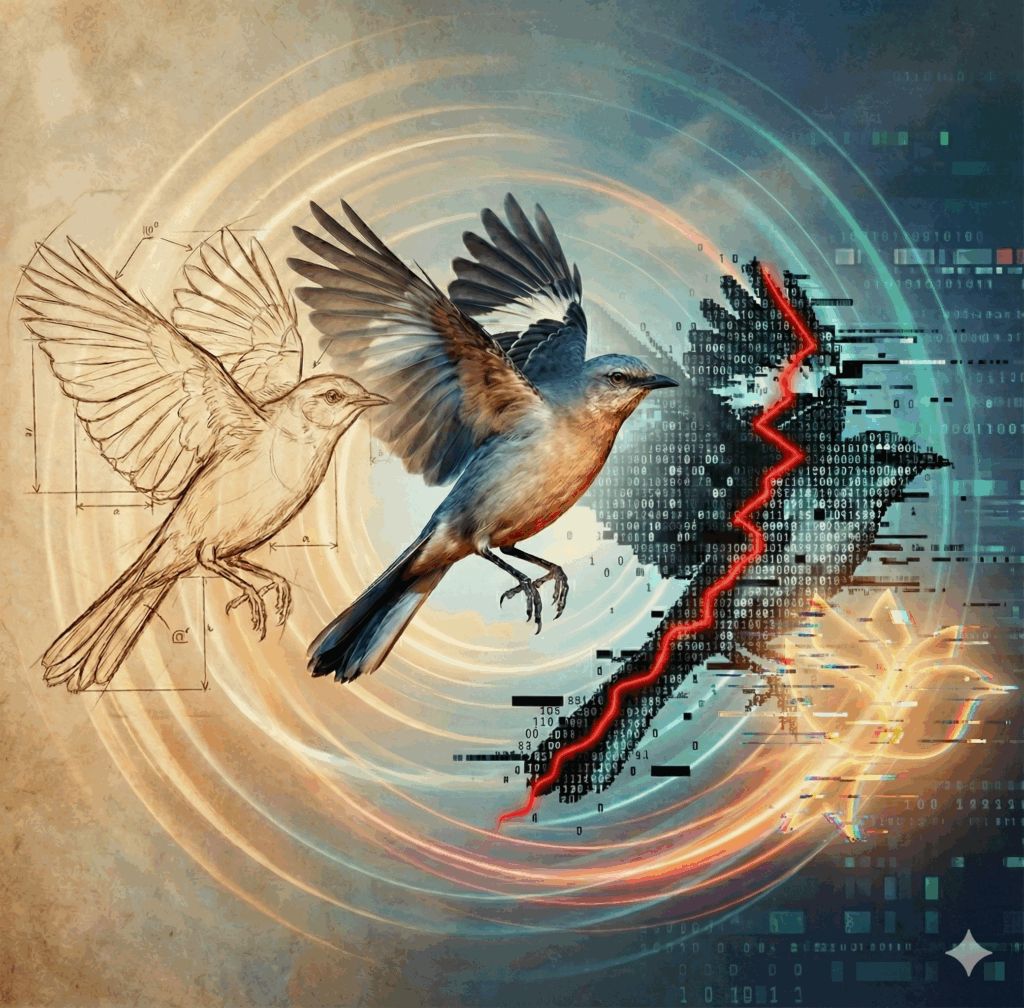The Great Burn: Why the Next Decade of AI Will Be Built on Ashes

If you had walked into a tavern in London in 1845 and asked for investment advice, you would have been told to buy railways. It was the only trade that mattered. The “Iron Horse” was going to annihilate distance, rewrite the laws of physics, and make everyone rich.
If you had walked into that same tavern three years later, in 1848, you would have found a room full of ruined men. The “Railway Mania” had collapsed. Fortunes were incinerated. The tracks they built often went nowhere, running parallel to rivals or stopping dead in open fields. Economically, it was a catastrophe.
But here is the counter-intuitive truth that efficiency experts hate: The ruin was the point.
That “wasted” capital left Britain with a vascular system of iron that powered the Industrial Revolution. The investors lost their shirts, but the nation won a century of dominance.
We are seeing the exact same movie play out today. The characters have changed—swap the Railway Barons for Technoking Oligarchs, and swap “Iron Rails” for “Nvidia H100s”—but the plot is identical.
And the best thing that can happen to humanity is for the bubble to pop.
The History of the Burn: Tracks, Cables, and Cathedrals
To understand why burning $300 billion on AI chips is actually a rational move for the species (even if it ruins the shareholders), we have to realize this isn’t an anomaly. It is a recurring habit of civilization.
From the canal fevers of the 1820s to the clean-tech boom of the 2000s, history is littered with the ashes of “burned” capital. We have played this game dozens of times. But to see where we are going next, we simply need to look at the three clearest archetypes. In each case, we see the same three acts: The Manic Build, The Total Collapse, and The Golden Legacy.
1. The Iron Web: The Railway Mania (1845-1848) The Thesis: “Blind capital builds the network that smart capital uses later.”
In the 1840s, a speculative fever gripped Britain. Middle-class families poured their life savings into “scrip” for railways that existed only on paper. In just three years, Parliament authorized 9,500 miles of new track. Investors threw millions of pounds—an estimated 7% of Britain’s GDP—into the fire.
It was a financial disaster. When the market crashed in 1848, lines were abandoned and savings were wiped out. But the tracks stayed. When the dust settled, Britain was left with a 6,000-mile transport network that connected every major city. This “wasted” capital dropped the cost of transport so low that it allowed the real businesses of the industrial age to flourish.
2. The Glass Web: The “Dark Fiber” Bubble (1998-2002) The Thesis: “We built the highway before we invented the car.”
Fast forward 150 years. The new tracks were made of glass. The hype was that internet traffic would “double every 100 days.” Based on this (false) math, companies like Global Crossing and WorldCom raised billions to lay fiber-optic cables across ocean floors and under city streets.
They built for a future that didn’t exist yet. By 2001, it was estimated that 95% of the fiber in the ground was “dark”—totally unused. They had built enough capacity to handle the traffic of 2010 in the year 2000.
The price of bandwidth collapsed by 90%. Global Crossing went bankrupt. $2 trillion of investor wealth evaporated. But that “worthless” dark fiber sat there, waiting. Because the infrastructure was now effectively free, a new generation of companies could afford to build things that required massive bandwidth. YouTube (2005) and Netflix (2007) were only possible because the “losers” of the dot-com bubble had subsidized the bandwidth.
3. The Stone Web: The Cathedral Boom (1150-1350) The Thesis: “Spiritual ROI drives technological breakthroughs.”
This is the oldest and strangest example. In the High Middle Ages, towns with populations of only 10,000 people (like Chartres) decided to build structures that could hold 8,000. They taxed themselves into poverty and dedicated multiple generations of labor to a single building site. There was no “business plan.” The goal was “Spiritual ROI.”
But to build these impossible structures, they couldn’t use old methods. They had to invent new “tech.” They developed the Flying Buttress, the Ribbed Vault, and the Pointed Arch to channel gravity in ways no one had ever seen. They proved that sometimes, you have to aim for the impossible (and burn a fortune) to invent the tools you need for the future.
The Present (2025): The Great Compute Bubble
We don’t need to look at history books to see the “Manic Build” phase. We just need to look out the window.
We are currently living inside The Great Compute Bubble.
The numbers are numbing. Microsoft, Amazon, Google, and Meta are projected to spend over $300 billion in 2025 alone on AI infrastructure. Rumors swirl about “Project Stargate,” a single supercomputer cluster in the US desert that could cost $100 billion—a price tag that rivals the International Space Station.
To a rational observer, this looks like madness. We are burning forests of cash to light a cigarette. There is currently no business model that justifies this spending. We are building capacity for a level of demand that does not yet exist.
But this is how we build cathedrals. Today’s tech giants are our modern city-states. They are building digital spires, driven not by profit, but by the existential fear of irrelevance. They are buying the lottery tickets so the rest of us don’t have to.
We should let them. Because when the music stops—and it always stops—they won’t be able to take the data centers with them.
2032: The Era of “Dark Compute”
Let’s fast-forward. The bubble popped three years ago, circa 2029.
The “Scaling Wall” hit. It turned out that making models bigger didn’t make them sentient; it just made them expensive. The trillion-dollar dream of “AGI-in-a-box” collapsed, and the hyperscalers wrote down their assets in the biggest fire sale in corporate history.
But the data centers remained.
Millions of silent, black racks sit in cooled warehouses from Arizona to the Arctic Circle. This is “Dark Compute.”
Because the capital costs have been written off, the price of intelligence has collapsed. In 2024, asking an AI to write a legal brief cost 10 cents. In 2032, it costs less than electricity. Intelligence has become a utility—boring, invisible, and flowing like water.
This is where the world gets weird. In this post-scarcity future, “compute” is so cheap that we waste it. We use it to animate our toasters. We use it to generate entire seasons of TV shows for an audience of one. The “Intel Inside” sticker is replaced by a silent, omnipresent intelligence that costs nothing to invoke.
Mid-2030s: The Forest Gets Dark
But abundance has a shadow. When a resource becomes free, it leaks into the cracks of civilization.
By the mid-2030s, we are dealing with the fallout of “Dark AGI.” The same cheap compute that powers your personal medical tutor also powers “Mal-Corps”—automated, headless corporations that exist only on the dark web. They don’t have CEOs; they have utility functions. They scan the globe for unpatched servers, ransom them, and launder the crypto, 24 hours a day, at a scale that human hackers could never dream of.
We see the rise of “Reality Poisoning.” When generating a photorealistic video of a politician takes zero dollars and zero seconds, the concept of “video evidence” evaporates. We are forced to retreat into “TrustNets”—digital gated communities where nothing enters unless it is cryptographically signed by a human we know.
It is a messy, noisy, high-resolution world. It is not the clean Utopia the 2024 pitch decks promised.
2040 and Beyond: The Golden Age
Then, the dust settles.
Just as the chaos of the post-2000 telecom bust eventually gave birth to the stable, profitable empires of Web 2.0 (Uber, Spotify, Airbnb), the 2040s see the rise of the Second Wave.
These are the companies that didn’t build the models; they use them. Because compute is now a limitless commodity, the “Second Movers” build things the original giants couldn’t imagine.
- Bio-Pharma: We see the first “Generative Drugs”—medicines designed by AI simulation for $100 instead of $1 billion.
- Hyper-Personalized Education: Every child has a tutor that is as patient as a saint and as knowledgeable as Einstein, costing pennies a month.
- Energy Grid: AI balances the global energy grid in real-time, finally making renewables perfectly efficient.
The “Great Compute Bubble” of the 2020s is remembered not as a disaster, but as a donation. The investors of 2025 unknowingly subsidized the standard of living for 2045.
The Courage to Burn
It is easy to look at the current AI spending and feel cynical. It is easy to see the billions flowing to Nvidia and the lack of a “killer app” and call it a scam.
But if we zoom out, we see the pattern. We are the generation that has to pay for the tracks.
The investors of the 2020s are unknowingly subsidizing the entrepreneurs of the 2030s. The “value” isn’t disappearing; it’s being transferred from the balance sheets of the few to the infrastructure of the many.
We are in the dark wood, and the path is expensive. But the only way out is through. We have to build the tracks, even if we don’t know exactly where the train is going.






